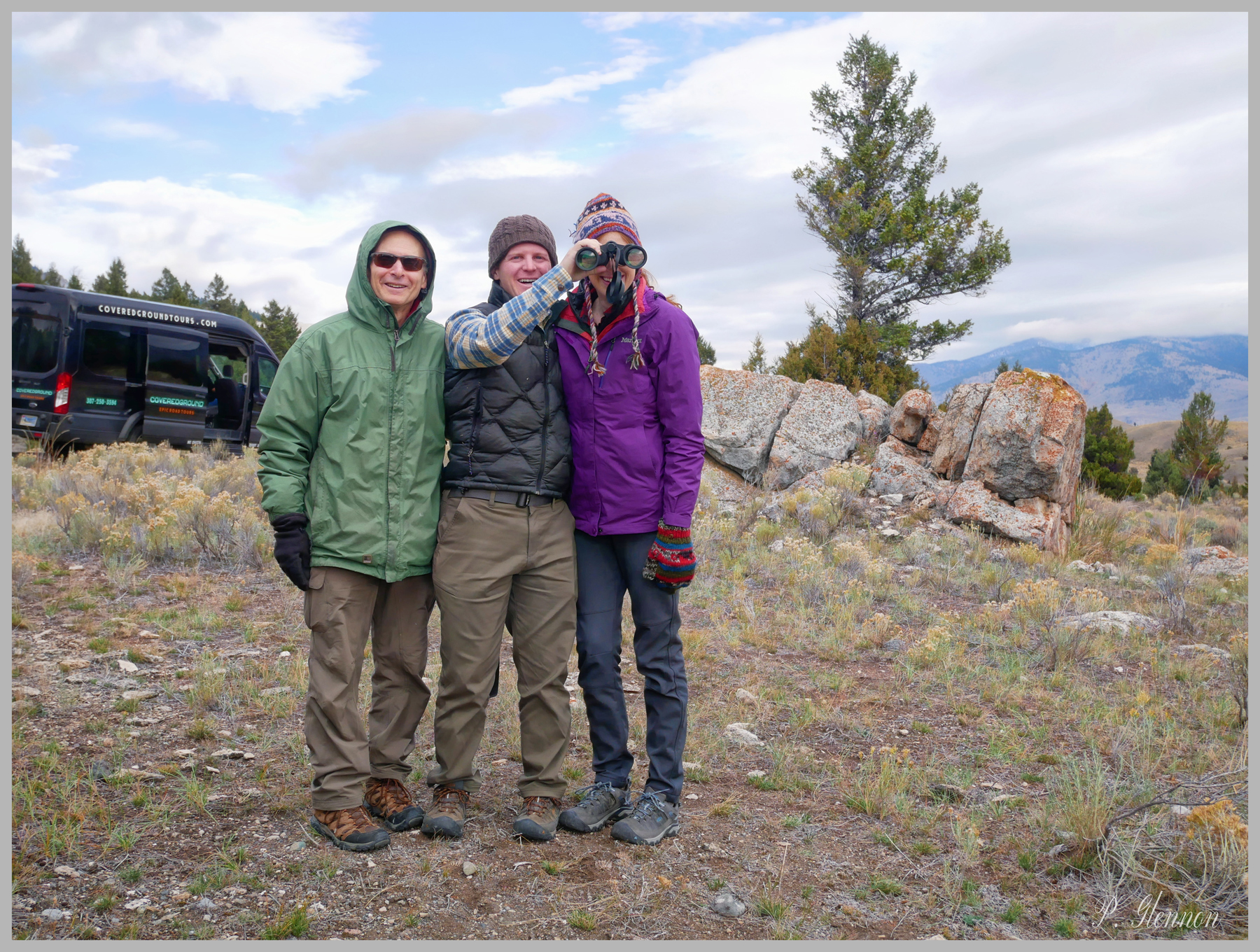Best Places to See Wildlife in Yellowstone National Park

If you’re traveling to Yellowstone, chances are you’re hoping to see as much wildlife as possible. The Yellowstone ecosystem is home to some of the most diverse wildlife in the country, including grizzly bears, wolves, black bears, elk, moose, fox, mule deer, coyotes, bison, and over 300 species of birds.
 Specific species of wildlife frequent different areas of the park during different seasons, which can make them harder to track. Unless you’re an expert in the area, it can be hard to make the most of your time when it comes to wildlife. In fact, without knowing recent activity, time of year trends or popular feeding grounds, many visitors leave without ever seeing a grizzly or black bear. Yellowstone encompasses 3,471 square miles, and blindly driving around the park doesn’t provide the best chances for wildlife encounters.
Specific species of wildlife frequent different areas of the park during different seasons, which can make them harder to track. Unless you’re an expert in the area, it can be hard to make the most of your time when it comes to wildlife. In fact, without knowing recent activity, time of year trends or popular feeding grounds, many visitors leave without ever seeing a grizzly or black bear. Yellowstone encompasses 3,471 square miles, and blindly driving around the park doesn’t provide the best chances for wildlife encounters.
There are also specific times of the year that are better for wildlife spotting. May and Early June are typically the best time to see a plethora of wildlife in the park. During July & August, wildlife is more dispersed throughout the high alpine, but guides will still know the sweet spots and where to find them.
That’s why our Yellowstone wildlife tour is one of our most popular itineraries. Millions of visitors a year travel to Yellowstone solely to see wildlife, and they want to make sure that the time is spent wisely.
Whether you’re looking to book a wildlife tour of Yellowstone or taking the chance and going yourself, here are the best places to view wildlife in the park:
Best Places to See Wildlife in Yellowstone National Park (2025)
1. Lamar Valley
Located in the far northeast corner of Yellowstone National Park, Lamar Valley is famous for its wildlife. Photographers often spend days here, tracking and photographing wolves, grizzly bears, owls, and other animals. Wildlife is most active around sunrise, so getting here in the early morning hours offers the best chance to see the valley alive and in action. Lamar Valley is 40 miles long, and wildlife hot spots are often shifting, so research before heading out is key. 
2. Geyser Basins
You might think wildlife would avoid active geyser areas, but that couldn’t be further from the truth. Thermal areas provide a vital role in the Yellowstone ecosystem. Elk, bison, moose, and coyotes often hang around Mammoth Hot Springs, West Thumb Geyser Basin, Norris Hot Springs, and other areas. Old Faithful almost always has bison. It’s important to note that you should give wildlife a lot of space if you see one in a thermal area. They often cross boardwalks or hang close to parking lots. This does not mean they are tame, and you should give them at least 25 meters (75 feet) of space.
3. Hayden Valley
Grizzly Bears favor more open landscapes, making sighting easier in locations like Lamar Valley and Hayden Valley. It’s nearly impossible to pass through this area, located between Lake and Canyon Village, without seeing a large herd of bison. The Yellowstone River winds through this section of the park, attracting many different kinds of animals, including otters, bald eagles, black bears, coyotes, and more. Like other valleys in Yellowstone, dusk and dawn are the best times for wildlife spotting.

4. East Entrance of Yellowstone
Entering Yellowstone from Cody, Wyoming, where we operate our wildlife tours, is one of the best places to encounter wildlife. The East Entrance to Fishing Bridge goes through a section of the park that is home to the most grizzly bears. There is almost always one hanging out a short distance from the road. If you know where he or she has been spotted recently, you will likely catch a glimpse of them. The drive from Cody to the east entrance also offers additional wildlife viewing opportunities, including big horn sheep, mountain goats, bison, and black bears.
Wildlife Safety in Yellowstone National Park
It’s vital to remember – these animals are wild! Wildlife safety is one of the essential rules of visiting Yellowstone. Stay at least 100m (300 feet) from grizzly bears and wolves. Keep 25m (75 feet) from all other wildlife. Many visitors get too close to bison, elk, and moose, thinking they are less threatening than other wildlife. The truth is these three animals are often more aggressive than bears, especially when it comes to protecting their young. Never approach wildlife, even if they seem tame. A Yellowstone wildlife tour guide can help tell you what a safe distance is from each animal.

Best Places to See Wildlife in Yellowstone National Park in 2025
If you’re traveling to Yellowstone and want the best chance of seeing all the wildlife the area offers, join a Yellowstone wildlife tour out of Cody, Wyoming. Our local experts know exactly what grizzlies are hanging where, where fresh carcasses are that will attract additional wildlife, etc.
Learn more about our Yellowstone wildlife tours here.
Interested in a take a Yellowstone tour from Cody, Wyoming? Contact us here.
